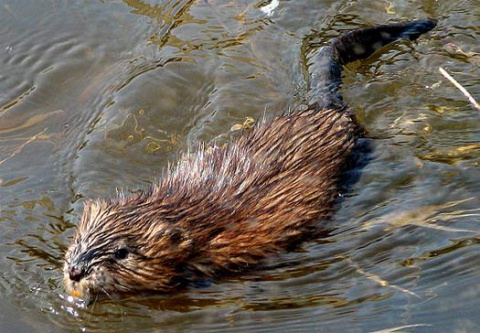
27 Jun 2017 FIRST UPDATE OF THE LIST OF INVASIVE ALIEN SPECIES OF UNION CONCERNS
On the 19th of June 2017, EU Member states approved the inclusion of 12 new species to the list of Invasive Alien Species of EU concern.
The additions comprise of 3 animals and 9 plants. The list counts now 49 species (new species in bold):
26 animal species:
– Amur Sleeper Perccottus glenii
– Asian Hornet Vespa velutina
– Chinese Mitten Crab Eriocheir sinensis
– Coypu Myocastor coypus
– Egyptian Goose Alopochen aegyptiaca
– Fox Squirrel Sciurus niger
– Grey Squirrel Sciurus carolinensis
– Indian House Crow Corvus splendens
– Marbled Crayfish Procambarus spp.
– Muntjac Deer Muntiacus reevesii
– Muskrat Ondatra zibethicus
– North American Bullfrog Lithobates (Rana) catesbeianus
– Pallas’s Squirrel Callosciurus erythraeus
– Raccoon Procyon lotor
– Raccoon Dog Nyctereutes procyonoides (enters into force at 2 February 2019)
– Red Swamp Crayfish Procambarus clarkii
– Red-eared Terrapin/Slider Trachemys scripta elegans
– Ruddy Duck Oxyura jamaicensis
– Sacred Ibis Threskiornis aethiopicus
– Siberian Chipmunk Tamias sibiricus
– Signal Crayfish Pacifastacus leniusculus
– Small Asian Mongoose Herpestes javanicus
– South American Coati Nasua nasua
– Spiny-cheek Crayfish Orconectes limosus
– Topmouth Gudgeon Pseudorasbora parva
– Virile Crayfish Orconectes virilis
23 plant species:
– Alligator Weed Alternanthera philoxeroides
– American Skunk Cabbage Lysichiton americanus
– Asiatic Tearthumb Persicaria perfoliata (Polygonum perfoliatum)
– Broadleaf Watermilfoll Myriophyllum heterophyllum
– Chilean Rhubarb Gunnera tinctoria
– Common Milkweed Asclepias syriaca
– Crimson Funtaingrass Pennisetum setaceum
– Curly Waterweed Lagarosiphon major
– Eastern Baccharis Baccharis halimifolia
– Floating Pennywort Hydrocotyle ranunculoides
– Floating Primrose Willow Ludwigia peploides
– Giant Hogweed Heracleum mantegazzianum
– Green Cabomba Cabomba caroliniana
– Indian Balsam Impatiens glandulifera
– Japanese Stiltgrass Microstegium vimineum
– Kudzu Vine Pueraria lobata
– Nuttall’s Waterweed Elodea nuttalli
– Parrot’s Feather Myriophyllum aquaticum
– Persian Hogweed Heracleum persicum
– Sosnowski’s Hogweed Heracleum sosnowskyi
– Water Hyacinth Eichhornia crassipes
– Water Primrose Ludwigia grandiflora
– Whitetop Weed Parthenium hysterophorus
Hunters play a significant role in the surveillance, management and eradication of IAS in Europe and, in most cases, this work is undertaken voluntarily (see the FACE Biodiversity Manifesto).
European hunters should note that all Member States are obliged to establish management measures for invasive alien species of Union concern in their territory. Those measures shall aim at eradication, population control or containment. For widespread IAS, there is no eradication obligation, but it is the prerogative of the Member State to select measures appropriate to its specific circumstances and based on an analysis of costs and benefits. FACE encourages its Members to work with relevant Ministries to ensure that hunters are part of the management of IAS.
Recently, FACE updated the Implementation Report of the Code of Conduct on Hunting and Invasive Alien Species (available soon), which will be presented to the Standing Committee of the Bern Convention by the end of 2017. The purpose is to keep European Governments updated on the progress of hunters in combatting IAS.


No Comments